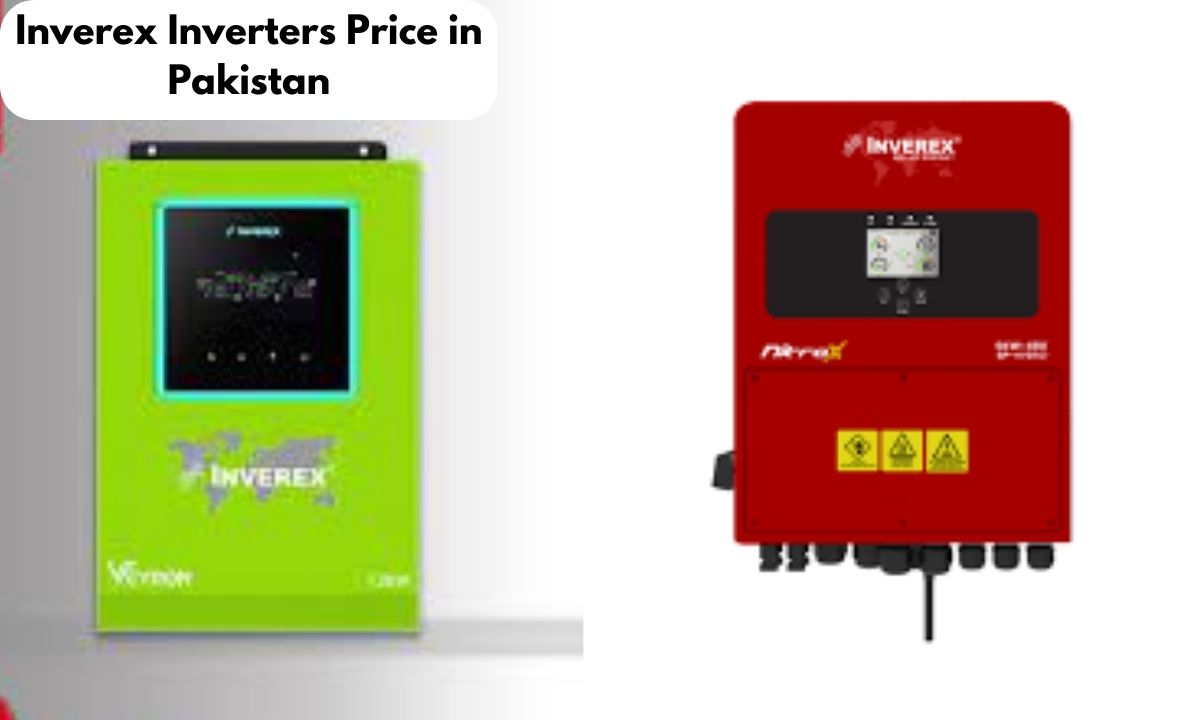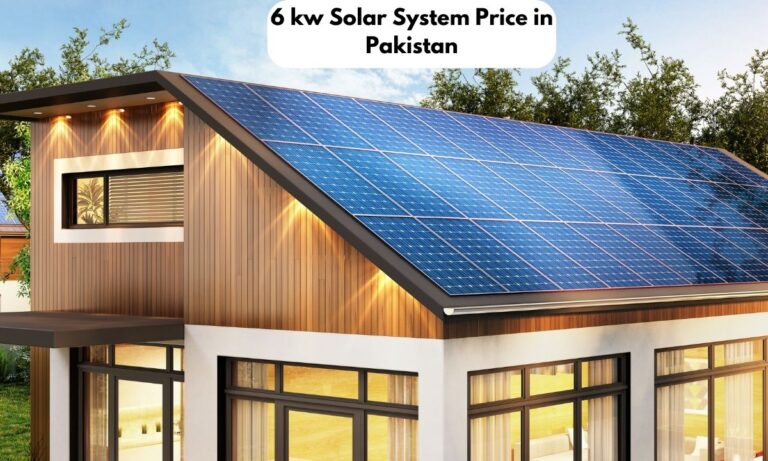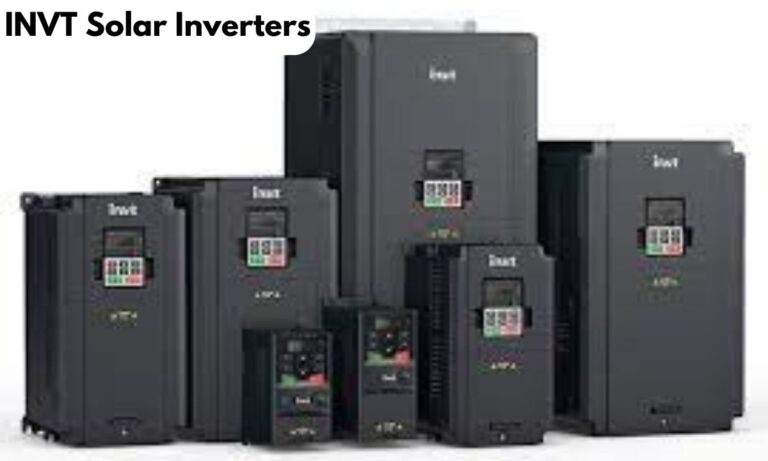Hybrid Solar System in Pakistan (A Detailed Guide)
In Pakistan, where there’s often a shortage of energy and regular blackouts, there’s a noticeable move towards more sustainable energy options. One such solution gaining attention is the hybrid solar system. This system cleverly combines the benefits of both natural and man-made materials to use solar power, save energy in batteries, and connect to the main power grid.
By doing this, it captures the ample sunlight available in Pakistan and saves extra energy for times when there’s no power. As I see it, this shift towards hybrid solar systems could be a game-changer for Pakistan, helping to solve its energy challenges and promoting a cleaner environment for everyone.

Why Hybrid Solar Systems are Gaining Popularity in Pakistan
In Pakistan, the rising popularity of hybrid solar systems comes from specific challenges the country faces regarding its energy needs. Both cities and countryside areas grapple with frequent power cuts due to an outdated power grid, which was primarily built around the time of Pakistan’s independence and hasn’t seen adequate upkeep since the 1960s. Furthermore, leaning heavily on imported fossil fuels has put a strain on Pakistan’s economy, especially when global events, like the situation in Ukraine, drive up fuel costs.
Given this backdrop, the quest for dependable and sustainable energy solutions is more urgent than ever. Hybrid solar systems step in as a beacon of hope by merging the strengths of solar energy, battery storage, and the traditional grid. This blend ensures a steady electricity flow, even when the grid fails, which is a significant boon for regions that frequently face power disruptions.
What sets hybrid systems apart from their conventional solar counterparts is their knack for saving surplus daytime energy in batteries. This stored energy becomes invaluable during outages or after sunset, ensuring uninterrupted power. Additionally, by connecting these hybrid setups to the main grid, users can engage in net metering. In simpler terms, any extra energy they produce can be shared back to the grid, potentially leading to cost savings and financial perks for the system’s owner.
Cost Analysis
In Pakistan, the expense of a hybrid solar system hinges on its size and the quality of its parts. Investing in these systems means paving the way for energy self-reliance and reaping substantial savings in the long run.
Regarding costs, here’s a breakdown: On average, a solar system in Pakistan will set you back between PKR 180 and PKR 220 per watt. This amount encompasses various components such as solar panels, inverters, installation services, necessary hardware, net metering arrangements, and the mounting framework.
Specific Costs for Different Sizes of Hybrid Solar Systems
| System Size | Cost Range (PKR) |
| 3kW | 600,000 – 850,000 |
| 5kW | 900,000 – 1,200,000 |
| 6kW | Around 799,000 |
| 7kW | 1,350,000 – 1,750,000 |
| 10kW | 1,700,000 – 1,900,000 |
| 15kW | Around 2.3 – 2.5 million |
| 20kW | Around 3 – 3.2 million |
Installation and Maintenance
Setting up a hybrid solar system in Pakistan is a methodical process that demands attention to detail and expertise. Here’s a concise guide to help you understand the steps involved:
- Site Evaluation and Energy Audit: Begin by evaluating the location where the solar panels will be placed. This step also involves determining the specific energy requirements for your home or business.
- System Design: Using the findings from the energy audit, a tailored system is crafted to meet your energy demands. This phase involves selecting appropriate solar panels, inverters, and batteries that align with your needs.
- Procurement: After finalizing the system design, the next step is to purchase the necessary components. Ensure that these components, including solar panels and inverters, meet international standards and carry the necessary certifications.
- Installation: Professionals will then install the solar panels at the designated location, be it on your roof or another suitable spot. They’ll also set up the inverters and batteries and connect the system to the grid if required.
- Activation: Once installed, the system is activated, and you can start harnessing solar energy for your needs. Proper installation ensures the system operates efficiently and safely.
Maintenance Tips: While solar panels are relatively low-maintenance, a few tasks can optimize their performance:
- Regular Cleaning: Periodically clean the solar panels to remove dirt and debris that could hinder efficiency. Depending on your location’s dust levels, cleaning every three to four months should suffice, but dusty areas might require more frequent cleaning.
- Routine Inspection: Periodically inspect the panels for any signs of damage, such as cracks or loose connections. Addressing these issues promptly ensures the panels operate at peak performance.
- Professional Assessment: Schedule an annual professional check-up for your solar panels. This ensures any potential issues are identified and addressed early on, maximizing the system’s lifespan and efficiency.
Components of a Hybrid Solar System
In Pakistan, where the demand for energy consistently surpasses its availability, hybrid solar systems emerge as a promising solution for a consistent and eco-friendly energy supply. These systems ingeniously combine various technologies to harness solar energy effectively. Let’s delve into the fundamental components that constitute a hybrid solar setup:
Main Components of a Hybrid Solar System:
- Solar Panels: At the heart of the system, solar panels play the pivotal role of capturing sunlight and transforming it into usable electrical energy.
- Batteries: These serve as the energy reservoir, storing excess energy for use during periods when sunlight isn’t available, like nighttime or power interruptions.
- Charge Controllers: Ensuring the longevity of batteries, charge controllers manage the charging process, preventing overcharge scenarios.
- Inverters: They play a crucial role by converting the direct current (DC) produced by solar panels into alternating current (AC), which is what most household devices utilize.
- Hybrid Inverter: A sophisticated option, the hybrid inverter integrates both inverter and charge controller functions, offering a more streamlined system design.
- Monitoring Systems: These tools track energy production and consumption, ensuring the system operates at peak efficiency.
- Grid Connection: Linking to the national electricity grid facilitates two-way energy flow, allowing users to sell surplus energy back or draw power when solar production falls short.
- Net Metering System: This mechanism records the energy interchange between the solar setup and the grid, potentially offering users financial advantages.
Optimizing Solar Panel Placement:
To extract the most from solar panels in Pakistan, it’s advisable to orient them towards the south, aligning roughly at an azimuth angle of 180 degrees. Such positioning ensures consistent sunlight exposure throughout the day. Additionally, adjusting the tilt angle, based on the location’s latitude, is essential. As an illustration, for places like Islamabad, a tilt angle of around 26 degrees is deemed optimal. This thoughtful placement and orientation significantly enhance the system’s efficiency and energy yield.
Choosing the Right Hybrid Solar System
Selecting the appropriate hybrid solar system requires thoughtful evaluation of various aspects such as the system’s capacity, component caliber, and warranty terms. Here’s a concise guide to help you navigate these considerations:
Determining System Size: To tailor the hybrid solar system to your needs, it’s essential to gauge your daily energy consumption. For example, if your property uses roughly 600 units per month, you’d likely benefit from a 6kW solar system paired with a 40kWh battery bank and a minimum of a 7kW inverter. Nonetheless, it’s prudent to lean towards a slightly more potent inverter to accommodate potential operational losses and future system expansions.
Assessing Component Quality: The longevity and efficiency of your hybrid solar system hinge largely on the caliber of its components. When zeroing in on a hybrid solar inverter, delve into aspects like the brand’s credibility, its compatibility with your chosen solar panels and battery storage, and the ease associated with its installation and upkeep. Prioritize inverters that boast high efficiency and come equipped with monitoring features, empowering you to oversee your system’s performance and promptly address any anomalies.
Understanding Warranty Considerations: Shielding your investment is paramount, and warranties serve as a safety net against potential glitches and performance discrepancies. Typically, solar panels offer a workmanship warranty spanning 10 to 12 years, coupled with a performance guarantee stretching from 20 to 25 years. On the other hand, solar inverters typically flaunt product warranties ranging from 10 to 25 years. As a best practice, gravitate towards manufacturers renowned for their extended warranty durations and a commendable track record of honoring warranty claims.
Hybrid vs. On-Grid Solar Systems
In Pakistan, where ensuring consistent energy availability remains a pressing concern, the relevance of solar power systems continues to grow. Among the available options, both hybrid and on-grid solar systems stand out, each presenting distinct advantages and factors to ponder.
Distinguishing Hybrid and On-Grid Systems:
Hybrid Solar Systems: These setups stand apart as they integrate battery storage, granting them autonomy from the main grid. Essentially, they function akin to an Uninterruptible Power Supply (UPS), ensuring electricity availability even during evening hours, nighttime, or unforeseen power outages. While the initial investment might be higher due to the inclusion of solar batteries and hybrid inverters, the resilience and comprehensive benefits they offer make them a compelling choice.
On-Grid Solar Systems: Contrastingly, on-grid systems maintain a direct link with the public electricity grid, bypassing the need for battery storage. Their installation and maintenance come at a relatively lower cost compared to their hybrid counterparts. A standout feature is the potential to export surplus energy back to the grid, facilitated by net metering. This mechanism not only fosters sustainable energy practices but also translates to tangible savings and a more rapid return on investment. However, it’s essential to note their limitation: they don’t supply power during grid outages.
Tailoring Choices to Specific Needs:
Hybrid Systems: For regions grappling with frequent power disruptions, hybrid systems emerge as a beacon of reliability. They resonate with individuals or businesses prioritizing uninterrupted power access, even if it entails a higher initial investment, envisioning prolonged benefits and autonomy.
On-Grid Systems: Conversely, areas blessed with a consistent power supply can harness the advantages of on-grid systems. They represent a cost-efficient avenue, especially for those keen on leveraging net metering benefits without the imperative need for backup power during occasional outages.
In essence, while both systems harness solar energy, their distinct features cater to varied requirements, emphasizing the importance of aligning choices with specific situational needs and priorities.
Benefits of Hybrid Solar Systems
Diminished Electricity Expenses: One of the standout benefits of hybrid solar systems is their capability to facilitate self-generation of electricity. This independence can culminate in a notable reduction in electricity bills. In fact, households embracing such self-reliant methods often witness a substantial decrease in their electricity expenses, frequently surpassing 30%. By harnessing and utilizing their own energy, individuals and families can curtail their reliance on the conventional grid, translating to enhanced independence and tangible cost savings. Additionally, the strategic utilization of solar power during daylight hours minimizes dependency on battery reserves at night, further amplifying overall energy bill savings.
Reliability during Electrical Outages: For regions plagued by recurrent power interruptions, the appeal of hybrid solar systems becomes even more pronounced. Their inherent energy storage capabilities empower them to capture surplus energy generated during sunlit hours, storing this excess in batteries for subsequent use. This reservoir ensures that even when external grids falter, users remain shielded from the inconvenience of power disruptions. Essentially, hybrid systems emerge as steadfast allies, guaranteeing a consistent electricity supply, especially crucial for essential systems and operations.
Environmental Considerations: The environmental ramifications of hybrid solar systems extend beyond mere cost savings. By diminishing dependence on fossil fuels, these systems play a pivotal role in curbing carbon emissions, fostering a cleaner ecological footprint. Solar energy, characterized by its renewable and non-polluting nature, contrasts starkly with the carbon emissions associated with traditional energy sources. By championing the adoption of hybrid solar systems, Pakistan stands poised to reduce its carbon footprint, embracing a more sustainable energy paradigm. Notably, households transitioning to self-generation typically curtail their greenhouse gas emissions by an impressive 12 tons annually. Additionally, the adoption of solar energy can alleviate peak electricity demands, especially pertinent during Pakistan’s scorching summer months, mitigating the imperative for additional power plants and circumventing associated environmental adversities.
Conclusion
Indeed, hybrid solar systems stand as a beacon of hope amidst Pakistan’s pressing energy challenges. By presenting a dependable, eco-friendly, and economically viable alternative, these systems address the nation’s chronic power deficits head-on.
Embracing hybrid solar solutions heralds a transformative shift: granting households and businesses newfound energy autonomy, diminishing the dependence on dwindling fossil fuel resources, and fostering an environment marked by reduced carbon footprints.
For discerning homeowners and forward-thinking enterprises in Pakistan, delving into hybrid solar investments transcends mere energy provision—it symbolizes a commitment to fostering a sustainable, cleaner tomorrow.
Such initiatives not only alleviate immediate energy concerns but also pave the way for substantial fiscal savings, underscoring the multifaceted benefits of this innovative approach to power generation and consumption.






